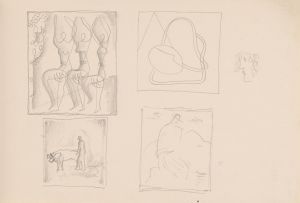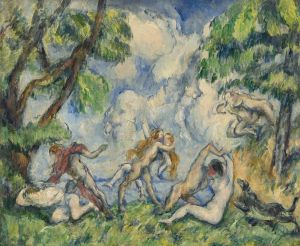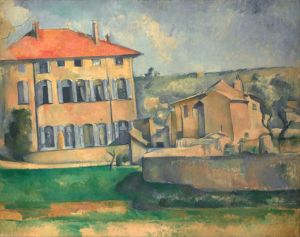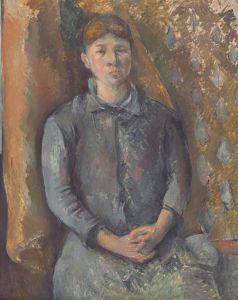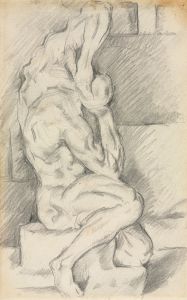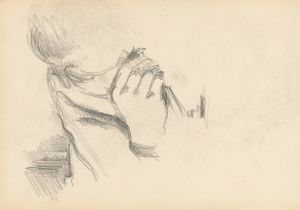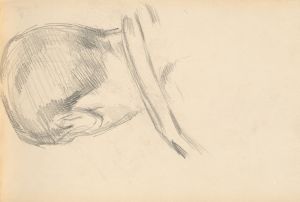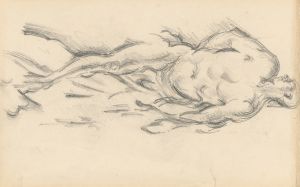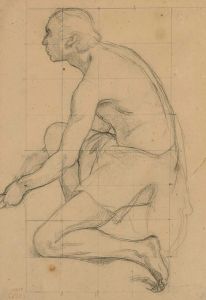
Sketch of Madame Cézanne
A hand-painted replica of Paul Cézanne’s masterpiece Sketch of Madame Cézanne, meticulously crafted by professional artists to capture the true essence of the original. Each piece is created with museum-quality canvas and rare mineral pigments, carefully painted by experienced artists with delicate brushstrokes and rich, layered colors to perfectly recreate the texture of the original artwork. Unlike machine-printed reproductions, this hand-painted version brings the painting to life, infused with the artist’s emotions and skill in every stroke. Whether for personal collection or home decoration, it instantly elevates the artistic atmosphere of any space.
"Sketch of Madame Cézanne" is a work by the renowned French artist Paul Cézanne, who is often credited with bridging the transition from 19th-century Impressionism to 20th-century Cubism. Cézanne's work laid the foundation for the modern art movement, and his innovative approach to form and color has had a lasting impact on the art world.
Paul Cézanne was born on January 19, 1839, in Aix-en-Provence, France. He was a pivotal figure in the development of modern art, known for his unique method of building form with color and his analytical approach to nature. Cézanne's work is characterized by repetitive, exploratory brushstrokes that are highly recognizable and convey intense study of his subjects.
The subject of "Sketch of Madame Cézanne" is Hortense Fiquet, Cézanne's wife, who was a frequent subject in his work. Cézanne and Hortense met in the 1860s, and they married in 1886. Despite their long relationship, Cézanne's family did not initially approve of Hortense, which led to a somewhat strained personal life. Nevertheless, Hortense was a significant presence in Cézanne's life and art, and she appeared in over 40 of his paintings.
"Sketch of Madame Cézanne" is one of several portraits Cézanne created of his wife. These portraits are notable for their exploration of form and color rather than for capturing a detailed likeness or emotional expression. Cézanne was more interested in the structural aspects of painting, and his portraits of Hortense reflect this focus. The sketches and paintings of Madame Cézanne are characterized by their calm and composed demeanor, often showing her seated and gazing directly at the viewer or slightly off to the side.
Cézanne's approach to portraiture was revolutionary for its time. He moved away from the traditional emphasis on capturing the sitter's personality or status and instead concentrated on the formal elements of the composition. His use of color to model form and his disregard for conventional perspective were groundbreaking. This method can be seen in the way he painted Hortense, where the emphasis is on the geometric shapes and the interplay of colors rather than on realistic representation.
The "Sketch of Madame Cézanne" exemplifies Cézanne's technique of using color to create depth and volume. His brushwork is deliberate and methodical, with each stroke contributing to the overall structure of the piece. This approach would later influence artists such as Pablo Picasso and Georges Braque, who developed Cubism, a movement that Cézanne's work helped to inspire.
Cézanne's portraits of Madame Cézanne, including this sketch, are housed in various collections around the world, reflecting their importance in the study of modern art. These works continue to be analyzed and appreciated for their innovative approach to form and their contribution to the evolution of painting.
In summary, "Sketch of Madame Cézanne" is a testament to Paul Cézanne's pioneering approach to art. Through his portraits of his wife, Cézanne explored new ways of seeing and representing the world, laying the groundwork for future generations of artists. His work remains a cornerstone of art history, celebrated for its depth, complexity, and enduring influence.







